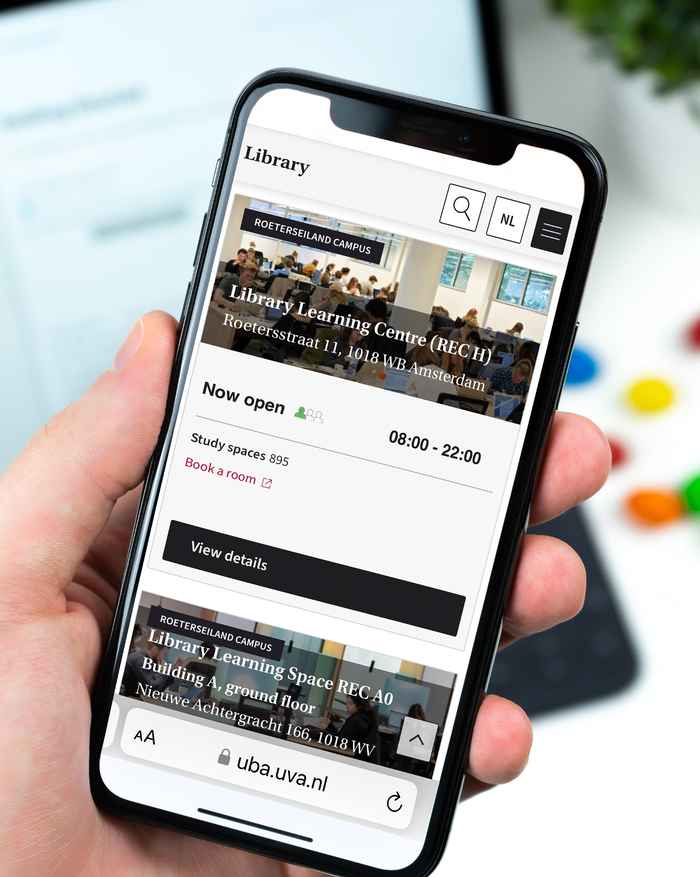Check how busy study spaces are per location 'in real time'
Crowding indicators are displayed along with the opening hours
19 January 2023

It is the same system as the NS (Dutch railway company) uses. What you see are green (up to 50% occupancy), orange (50-70%) or red (>80%) person icons, an easy way to find out how busy it is.
This puts the University of Amsterdam ahead of the game because of the scale of the system that provides insight into the study places on the campuses on Roeterseiland, the University Quarter and Science Park. The Library is thus responding to student demand partly by coordinating with the Central Student Council (CSR).
Robin van Schijndel, Library’s head of Campus Services, 'This is, of course, the beginning. Now that this is possible, the Library can further refine that system in the near future and also show how many computer and collaborative workstations are available per location. And a next step may be to share the expected occupancy rates.'
Central Student Council
CSR member Carlos van Eck: 'Students have a tough time finding study spaces, definitely in exam week. Due to the growth of the University this issue is growing larger every year. Therefore we are happy that the University is taking steps to facilitate students in finding study spaces. The Library has involved us in at many points in time. However, we still see that the issue of a lack of space is not resolved on a structural level, and we call on the board to keep this as a top priority.'
Diversity of study spaces
The Library is creating as much diversity as possible in spaces, from large study rooms to smaller spaces, for groups or alone. The point is to meet the needs of the target group at a given time: sometimes students want to work in concentration in a silent room, at other times they want to collaborate and be able to talk aloud, take an online lecture or zoom with fellow students.
Robin van Schijndel: 'With crowding indicators, students can make a conscious choice based on their needs for the day and the availability of study places at any time of the day. Of course it is true that in the afternoon it is incredibly busy but certainly not at all locations.'
More study spaces
Last year, the Library realized Video Call Booths, where students can take online classes or attend hybrid meetings, two monitor rooms, where ergonomic 'long' work can be done, and 225 new study places in LAB 42 at Science Park. This year, work is underway on more study places in Roeterseiland campus in building J/K.
Any questions? Feel free to ask us.